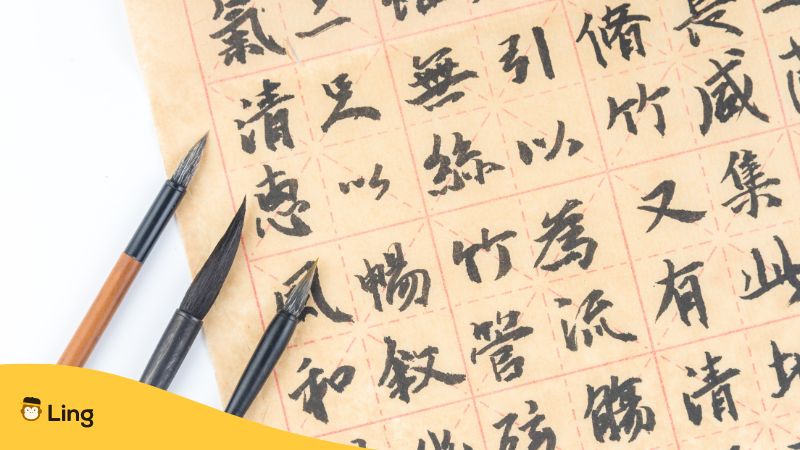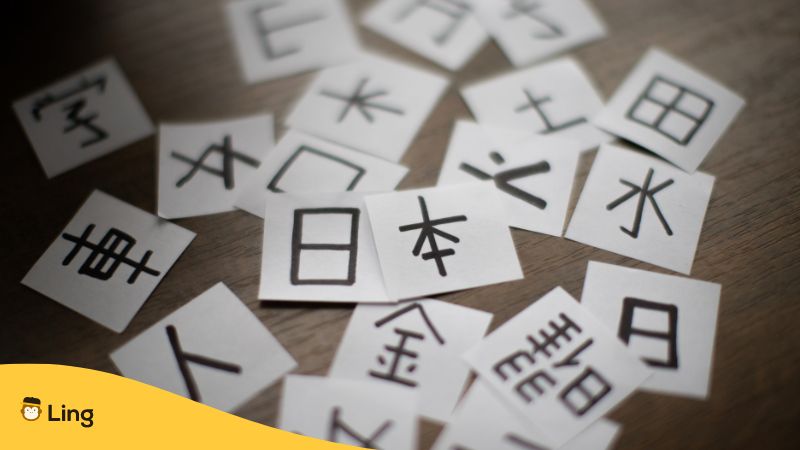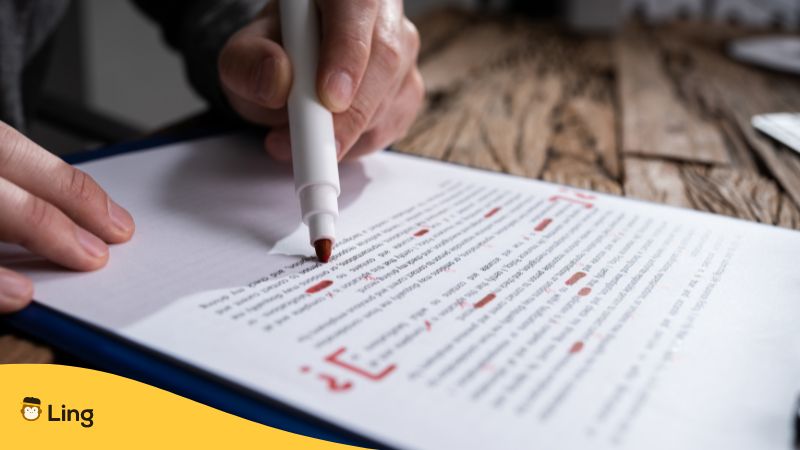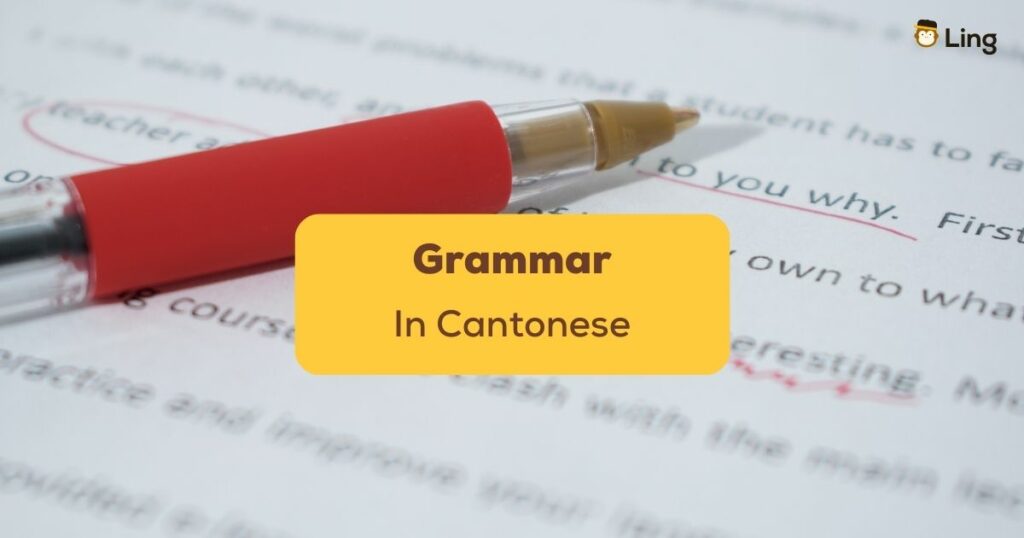Is Cantonese at the top of your list of languages to learn? Well, it should be! With over 66 million speakers worldwide, this variety of the Chinese language holds a prominent position among the most widely spoken languages. From the bustling streets of Hong Kong, passing through the vibrant neighborhoods of Chinatowns across the globe, to the Southern areas of China, the melodies of this language echo through the air, captivating the hearts and minds of language enthusiasts.
Let’s take a look at 5 essential rules to master Cantonese Grammar. Get ready to learn Cantonese with Ling right now!
Basics Of Cantonese Grammar
Cantonese Grammar is a world where simplicity and complexity dance in perfect harmony. Just when you think you’ve grasped the basics, it throws a curveball that leaves you scratching your head in bewilderment. But don’t worry; we will unravel the mysteries and lay a solid foundation for your learning journey. Whether it is Cantonese pronouns or Cantonese transition words that you want to master, you must start with the basics first.
We’ll guide you through seven indispensable grammar rules that will empower you to navigate the intricacies of Cantonese with confidence and finesse.
The Mighty Role Of Verbs In Cantonese Grammar
Before we delve deeper into the intricacies of Cantonese grammar, let us take a moment to appreciate the fundamental role that verbs play in this fascinating language. In Cantonese, verbs hold tremendous power, as they dictate the structure and meaning of sentences. From simple daily activities to complex actions, verbs provide the essential framework for constructing meaningful expressions.
They also play a vital role in indicating tenses, aspects, and modalities. Cantonese, being a context-rich language, relies on the combination of verbs with time markers, Cantonese adverbs, and other particles to convey the desired temporal and modal nuances. Mastering the usage and conjugation of verbs enables you to express past, present, and future actions, as well as convey various shades of certainty, probability, and obligation.
Moreover, Cantonese verbs often undergo transformations or combine with other elements to form compound verbs, intensifying their meanings or adding specific nuances. These verb combinations provide versatility and richness to the language, enabling you to express complex ideas and emotions more precisely.

Sentence Structure – The Power Of SVO
When it comes to sentence structure and word order, Cantonese follows a familiar pattern known as Subject-Verb-Object (SVO). This means that the typical order of elements in a sentence is the subject, followed by the verb, and finally, the object. This straightforward structure allows for clear and concise communication, making sentences a breeze to construct.
Let’s take a look at an example to illustrate the SVO structure in Cantonese:
Sentence: 他吃蘋
Romanization: ta1 chi1 ping2
Literal translation: He eat apple.
Meaning: He eats an apple.
In this sentence, “他” (ta1) represents the subject, which means “he.” The verb “吃” (chi1) means “eat,” and “蘋” (ping2) is the object, which translates to “apple.”

Keep It Simple
In a world where languages often boast complex systems of genders, tenses, and intricate grammatical structures, Cantonese stands out as a beacon of simplicity. If you’ve ever struggled with remembering whether a noun is masculine or feminine in French or wrestled with the various verb tenses in English, get ready for a refreshing change. This language gets straight to the point, making it an absolute delight for anyone seeking straightforward communication.
One example of the remarkable aspects of Cantonese grammar is its lack of grammatical gender. Unlike languages such as French or Spanish, where nouns are assigned a gender, Cantonese nouns liberate you from the burden of remembering if a table is masculine or feminine.
Furthermore, this Chinese language variation bids adieu to the extensive tense system found in languages like English. Instead of wrestling with a myriad of past, present, and future tenses, it adopts a refreshingly efficient approach. It relies heavily on context and time markers to convey temporal information, sparing you the need to conjugate verbs based on time.
But Cantonese’s simplicity doesn’t stop there. This Chinese dialect has a knack for cutting to the chase, eliminating unnecessary words and phrases. Native Cantonese speakers are masters at conveying their intentions concisely, using a minimum number of words. Here’s an example:
Cantonese: 你喜歡蘋果嗎?
Pinyin: nei5 hei2 fun1 ping4 gwo2 maa3?
Literal translation: You like apples?
Meaning: Do you like apples?

Expression Particles
In the enchanting realm of Cantonese, final particles add a touch of flair and nuance to the language. These small, yet mighty, linguistic elements are used to indicate the mood, attitude, or emphasis of the speaker. They bring a colorful array of emotions to the forefront, infusing conversations with shades of politeness, certainty, doubt, and more.
Below is a table showcasing a few common final particles in Cantonese, along with their romanization and function/indication:
| Final Particle | Function / Indication | Example | Meaning |
| 呀 (aa3) | Softens the tone, adds friendliness | 我唔太鍾意你嘅廚藝呀 (ngo5 m4 taai3 dzung1 ji3 nei5 ge3 tsy4 ngai6 aa3) | I don’t like your cooking very much |
| 喇 (laa3) | Indicates an exclamation with an emphasis on the past; “already” | 佢曾經係一名医师喇 (koey5 tsang4 ging1 hai6 jat7 ming4 ji1 si1 laa3) | He used to be a doctor |
| 呢 (ne1) | Used in questions to soften the tone when inquiring about facts | 你系點樣搵到鎖匙嘅法呢? (nei5 hai6 dim2 joeng2 wan2 dou2 so2 si4 ge3 faat8 ne1?) | How did you find the key? |
| 之嘛 (zi1 maa3) | Indicates the limit at the end of a sentence; “only”; “that’s it” | 寫一百個字之嘛,容乜易啦! (se2 jat7 baak8 go3 dzi6 zi1 maa3, jung4 mat7 ji6 laa1!) | Just have to write a hundred words, easy peasy! |
| 咋 (zaa3) | Can be translated as “merely”; “nothing more.” | 只剩五個了咋 (dzi2 dzing6 ng5 go3 liu5 zaa3) | There are only five left |
Cantonese Tenses
Unlike languages that rely on verb conjugation to indicate past, present, or future actions, Cantonese adopts a distinctive approach. It utilizes additional words and phrases to convey temporal information, allowing for a flexible and nuanced expression of time. These words can be placed after the verb, at the beginning of the sentence, or right after the subject.
Let’s explore the ingenious methods Cantonese employs to express tenses.
Past Tense
| Cantonese Word | Romanization | Meaning |
| 咗 | zo2 | Have Done |
| 過 | gwo3 | Tried |
| 完 | jyun4 | Did |
| 曬 | saai3 | Completed |
| 啱啱 | aam1 aam1 | Just now |
| 頭先 | tau4 sin1 | A moment ago |
| 前排 | cin4 paai2 | A while back |
| 幾個禮拜之前 | gei2 go3 lai5 baai3 zi1 cin4 | A few weeks ago |
| 上個月 | soeng6 go3 jyut6 | Last month |
| 舊年 | gau6 nin2 | Last year |
Present Tense
| Cantonese Word | Romanization | Meaning |
| 喺度 | hai2 dou6 | Be/doing |
| 緊 | gan2 | In progress |
| 住 | zyu3 | Doing |
| 而家 | ji4 gaa1 | Now |
Future Tense
| Cantonese Word | Romanization | Meaning |
| 會 | wui5 | Will |
| 到時 | dou3 si4 | Then |
| 陣間 | zan6 gaan1 | Later |
| 跟住 | gan1 zyu6 | And Then |
| 之後 | zi1 hau6 | After |
| 聽日 | ting1 jat6 | Tomorrow |
| 後日 | hau6 jat6 | The day after tomorrow |
| 下個禮拜 | haa6 go3 lai5 baai3 | Next week |
| 下個月 | haa6 go3 jyut6 | Next month |
| 出年 | ceot1 nin2 | Next year |

Negating In Cantonese
In Cantonese, expressing negation is a vital skill that allows you to convey the opposite or negate statements effectively. To form a negative sentence, you need to first have in mind the temporal context of the sentence. Depending on whether the sentence is in the past, present or future tense, the negation is made by adding new characters before, after, or both before and after the verb.
To help you understand this concept better, here is a table that shows how to make a negation in Cantonese.
| Temporal Context | Affirmative Sentence | Cantonese | Sentence Structure | Example | Meaning |
| Past | I have been arrested | 我被捕了 (ngo5 bei6 bou6 liu5) | 未 (mei6) + verb + 過 (gwo3) | 我從未被捕過(ngo5 tsung4 mei6 bei6 bou6 gwo3) | I have never been arrested |
| Past | I broke it | 我打爛咗它 (ngo5 daa2 laan6 dzo2 taa1) | 冇 (mou5) + verb + 過 (gwo3) | 我冇打爛它過 (ngo5 mou5 daa2 laan6 taa1 gwo3) | I haven’t broken it |
| Present | I can cook | 我會煮飯 (ngo5 wui6/wui2/wui5 dzy2 faan6) | 唔 (m4) + verb | 我唔會煮飯(ngo5 m4 wui5 dzy2 faan6) | I can’t cook |
| Future | I will sell it | 我會賣掉它 (ngo5 wui6/wui2/wui5 maai6 diu6 taa1) | 唔會 (m4 wui5) + verb | 我唔会賣 (ngo5 m4 wui5 maai6) | I will not sell it |
Feeling confident with memorizing these words? If you want to take more lessons apart from beginner sessions, take a look at the Play Store or App Store and download the Ling app now! It contains more practice games for Cantonese homonyms or making Cantonese words plural. So why don’t you take this opportunity and learn with Ling?
Why Learn Cantonese Grammar?
When it comes to learning new languages or dialects, many people begin by memorizing individual words, hoping to string them together into coherent sentences. However, this approach is akin to assembling a puzzle without the picture on the box.
Sure, you might be able to piece something together, but without a solid understanding of grammar, your linguistic endeavors might leave you sounding like a malfunctioning robot with limited vocabulary, uttering phrases like “me likey” and “you go now.” And speaking of sounds, many languages have its own animal sounds or repeated words. Cantonese onomatopoeia is rich with these sentence emphasizing words to make you speak like a native.
Now, you may be wondering, what makes Cantonese grammar so intriguing? From its unique sentence structures to its fascinating use of particles and classifiers, Cantonese grammar is a treasure trove of linguistic wonders. Forget everything you thought you knew about subject-verb-object order or straightforward conjugation; it has a flair for bending the rules in unexpected and delightful ways.

Where Is Cantonese Spoken?
Cantonese, with its rich heritage and distinct linguistic features, has a significant presence across the globe. While it is primarily associated with the region of Guangdong and the bustling city of Hong Kong, Cantonese extends its linguistic influence far beyond these borders. Let’s explore the diverse corners of the world where Cantonese is spoken and cherished.
- Guangdong Province, China: As the birthplace of Cantonese, Guangdong Province remains the heartland of this vibrant language.
- Hong Kong: Renowned as an international financial hub and cultural melting pot, Hong Kong embraces Cantonese as its dominant language.
- Macau: As a former Portuguese colony, Macau developed a unique linguistic blend, influenced by both Cantonese and Portuguese.
- Overseas Chinese Communities: Cantonese has journeyed across the globe with Chinese diaspora communities. Cities such as San Francisco, New York, Vancouver, and Sydney have flourishing Cantonese-speaking communities.
- Southeast Asia: Cantonese has also found a home in various Southeast Asian countries with significant Chinese communities. Places like Malaysia, Singapore, and Thailand have pockets where Cantonese remains a vibrant language.
As a testament to its enduring influence, Cantonese has spread its roots far and wide, maintaining its relevance and cultural significance in different parts of the world. It serves as a powerful bridge connecting people across diverse communities and fostering a sense of shared identity and heritage.
Learn More Cantonese With Ling App
While Cantonese grammar serves as a crucial foundation for your learning, it is merely the tip of the iceberg on the exhilarating journey of mastering a new language. If you’ve found yourself captivated by the beauty and intricacies of the Cantonese dialect, there is so much more to explore and discover.
That’s where the Ling app comes in. With the Ling app, you can dive deeper into the world of Cantonese and unlock a treasure trove of knowledge and practical skills. From delving into the fascinating history of the language to learning essential phrases for everyday life with a native Cantonese speaker, Ling App offers a comprehensive and immersive learning experience.
Through interactive lessons, engaging exercises, and a user-friendly interface, the Ling app makes learning Cantonese not only effective but also enjoyable. Download the Ling app today and embark on an adventure that will take you beyond grammar.



































































